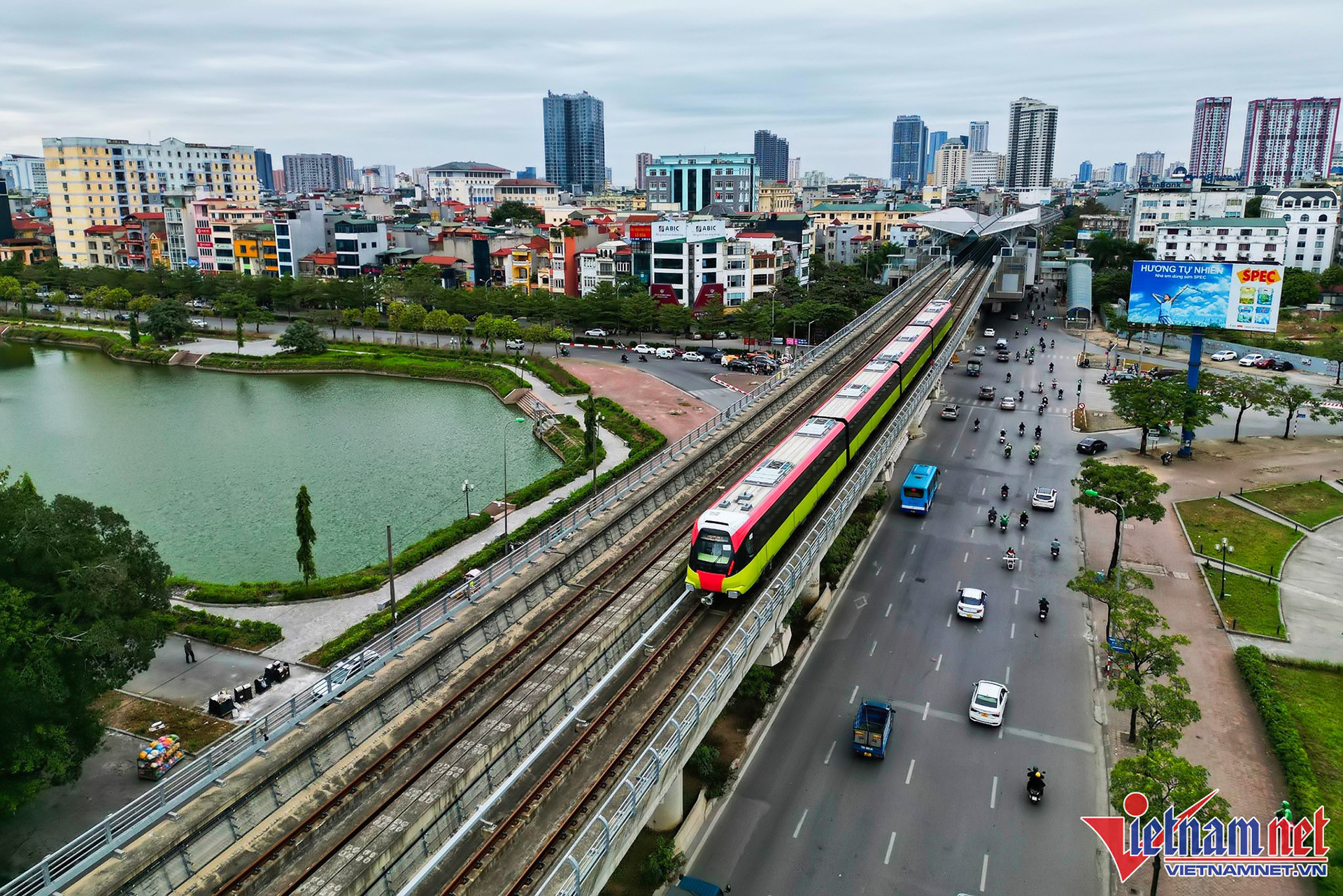
Under urban railway network development for 2024-2025, Hanoi plans to build 12 urban railways routes (600 kilometers long) with total investment capital of $50 billion.
Of this, $14.6 billion will be spent from now to 2030 to build 96 kilometers of railways, $22.5 billion in 2031-2035 to build 301 kilometers, and $18.2 billion in 2036-2045 to build 200 kilometers.
2 railway routes, 20 years
Building urban railways in the capital city is difficult. Over the last 20 years, only two railway routes have been put into operation (Cat Linh – Ha Dong and elevated Nhon - Hanoi Station).
With the current snail speed, experts say Hanoi won’t be able to complete the urban railway network as planned.
According to Hanoi’s Vice Mayor Duong Duc Tuan, it took 10-15 years to put the two railways into commercial operation.
“Suppose that we need to build 10 routes and we build one route after another, we will have to spend 100 years to complete them,” Tuan said.
Hanoi Mayor Tran Sy Thanh, pointing out that the Nhon - Hanoi Station railway line has been under construction for 15 years (the underground section is under construction), said it would be better to build all the lines as planned at the same time.
Hanoi is one of the cities globally with high population density, with 8.5 million people. With rapid urbanization and population increase, Hanoi is under pressure in transport infrastructure to ease traffic congestion and pollution.
Meanwhile, according to Khuat Viet Hung, director of the Institute of Transport Strategy and Development, Hanoi still cannot satisfy the requirements for development and easing traffic jams.
Hung stressed that the need to building an urban railway network is becoming more urgent than ever to solve these problems.
Transport opportunities
To complete the urban railway network in Hanoi as planned, the city needs to prioritize to reserve resources for railway development by increasing sources of revenue, practicing thrift and exploiting the land bank. Also, the state needs to allocate a budget to Hanoi’s railway development.
Regarding the development of railway network under the TOD model, Nguyen Cao Minh, head of the Hanoi Urban Railway Management Board, said this is the core strategy to promote dynamic and sustainable urban development. Hanoi now has a historical chance to deploy TOD in its long-term development.
Quang Phong